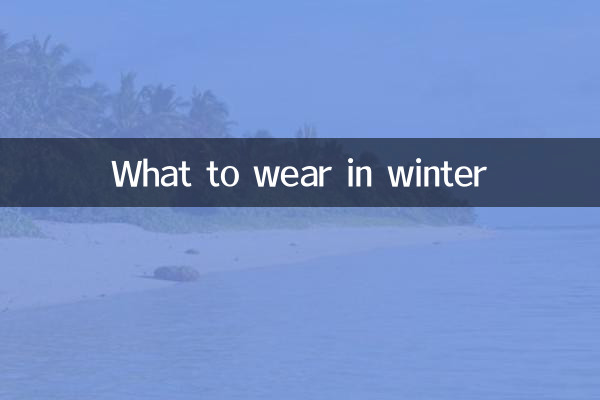What to wear when climbing in winter? Hot Topics and Practical Dressing Guide for the Whole Network
With the rise of outdoor sports in winter, "What to wear in winter hiking" has become a hot topic on social media and forums in the past 10 days. Combining the network discussion data and professional suggestions, we have compiled this structured outfit guide to help enthusiasts enjoy winter mountaineering safely and comfortably.
1. Hot data on winter mountain climbing and outfits across the entire network

| Topic keywords | Discussion Hot Index | Main focus |
|---|---|---|
| Layered dressing method | 8.7/10 | The scientific combination of foundation layer + warmth layer + protective layer |
| Waterproof and anti-slip shoes | 9.2/10 | High-top design, Vibram sole selection |
| Warm gloves | 7.5/10 | Touch screen function and warm balance |
| Keep your head warm | 8.1/10 | Discussion on Wool Hat vs Down Hat |
| Mountaineering socks selection | 6.9/10 | Wool content and thickness standards |
2. Detailed explanation of the three-layer dressing method in winter
1. Base layer (wicking layer)
Choose quick-drying materials (polyester or meinu wool) to avoid cotton clothing. Thickness is selected according to temperature:
- 0℃ to -10℃: Medium thickness (200g/m² wool)
- Below -10℃: Thickened type (300g/m² or above)
2. Intermediate layer (warm layer)
Select according to activity intensity:
- High-intensity sports: fleece jacket (Polartec material is the best)
- Low strength/stabilization: down or synthetic cotton filling (recommended 150-250g)
3. Protective layer (outer layer)
Must have waterproof and windproof functions:
- Hard shell jacket (waterproof index above 10000mm)
- Snow pants or soft shell pants (with windproof membrane)
- Pay attention to the joint glue pressing process
3. Guide to selecting key equipment
| Equipment Category | Recommended indicators | Popular Brand Reference |
|---|---|---|
| Hiking shoes | Waterproof GTX fabric, Vibram big sole, high-top design | Scarpa, Lowa, Salomon |
| Glove system | Inner fleece + outer waterproof, or ski gloves | Black Diamond, OR |
| Head protection | Wool hat + windproof mask covering ears | Smartwool, Buff |
| Mountaineering socks | Merino wool content ≥70%, medium and high cylinder design | Darn Tough, Icebreaker |
4. Five outfit misunderstandings that are hotly discussed across the Internet
1."The thicker you wear, the better"- In fact, the principle of dynamic warming should be followed and adjusted according to the intensity of exercise
2."On ordinary sneakers"- Professional anti-slip waterproof shoes are required in winter mountain roads
3."Ignore the ends of limbs"- Heat dissipation of hands, feet and head accounts for 40% of the whole body
4."Cotton underwear"- The thermal conductivity rate after sweating is 25 times that of dryness
5."A thick coat is done"- Cannot cope with temperature changes and sweating needs
5. Dressing plan at different temperatures
| Temperature range | Top combination | Bottom combination | Essential accessories |
|---|---|---|---|
| -5℃ to 0℃ | Quick drying clothes + thin fleece + soft shell | Fleece pants + soft shell pants | Wool hat + thin gloves |
| -10℃ to -5℃ | Quick dry clothes + thick fleece + charge clothes | Down liner + ski pants | Face protection + hiking stick |
| Less than -10℃ | Merino underwear + down middle layer + adventure-level charge jacket | Heated pants + windproof ski pants | Snow glasses + heating socks |
6. New trend equipment recommended by the entire network
1.Electric heating equipment: Smart temperature-controlled gloves/socks (discussion popularity has increased by 120%)
2.Renewable materials: Plant-based waterproof coating
3.Modular design: Down jacket with removable sleeves
4.Smart fabrics: Fleece jacket that automatically adjusts according to body temperature
5.Secure integration: Backpack and jacket with LED warning strip
The core of winter mountain climbing is"Layered adjustable, windproof and waterproof, end warm"Three principles. According to the data discussed on the entire network, professional climbers particularly emphasize the need to adjust their clothes according to real-time weather and prepare spare clothes. Remember, proper outfits can not only improve comfort, but also an important guarantee for safe mountaineering.

check the details

check the details